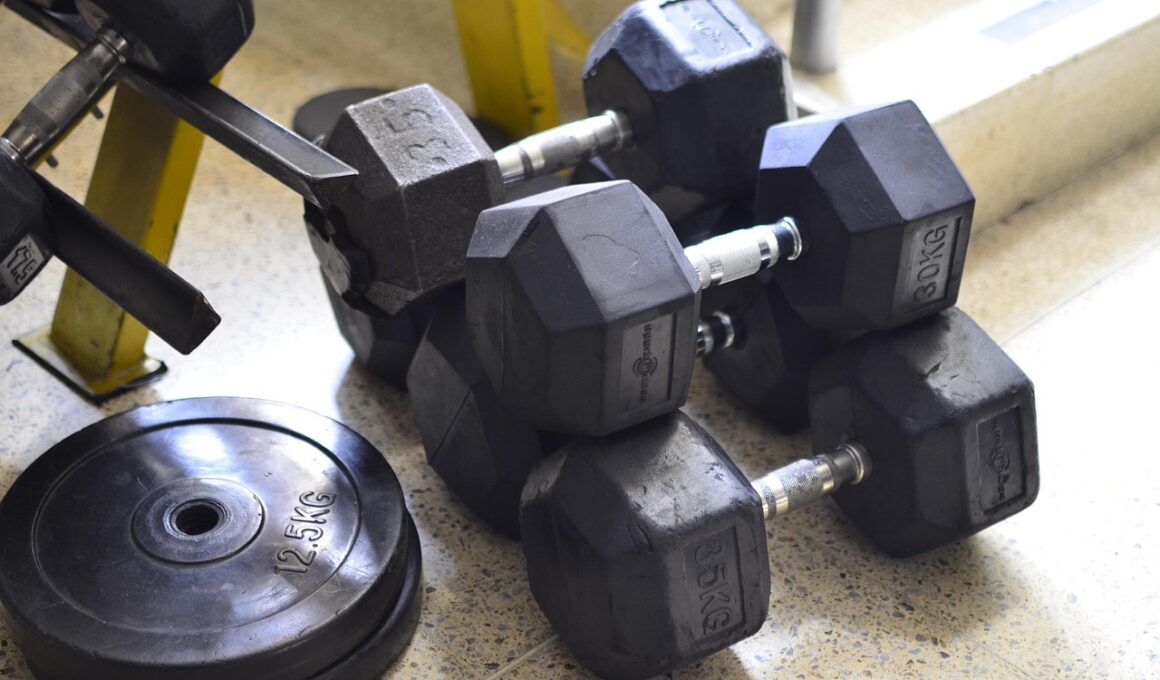CrossFit and Mental Visualization: Techniques for Competitive Edge
In the world of CrossFit, achieving peak performance goes beyond physical training. Many elite athletes utilize mental visualization as a powerful tool to improve their competitive edge. This technique involves mentally rehearsing workouts, competitions, and challenging scenarios to prepare for potential obstacles. Studies show that visualization can enhance neuromuscular pathways, leading to better performance during actual workouts. By picturing themselves successfully completing complex movements, athletes can boost their confidence and reduce performance anxiety. This dynamic mental exercise not only benefits physical execution but also builds emotional resilience. Implementing visualization can be simple; it can include guided imagery of specific exercises, envisioning personal bests, or even mentally preparing for a competition environment. In addition to improving physical skills, visualization can also help athletes develop a strong mindset, ensuring they remain focused and dedicated. Various methods of visualization exist, including use of meditation and mindfulness to magnify effects during training. By consciously incorporating visualization practices into their routines, athletes can gain a significant advantage. This mental tool serves as a foundation for success, allowing CrossFit athletes to overcome challenges and reach their goals.
As CrossFit athletes delve deeper into the practice of mental visualization, recognizing the connection between mind and body becomes crucial. Understanding how thoughts influence physical outcomes can enhance training strategies. Visualization helps in creating vivid scenarios that simulate peak performance situations. Athletes often create a mental movie where they see themselves executing each move with precision and intensity. This process activates the same neural patterns used during actual workouts, contributing to muscle memory development. Regular visualization sessions can lead to the development of a resilient mindset that prepares athletes for competition. Positive imagery fosters self-belief while diminishing fears and doubts. As a result, many athletes build confidence by repeatedly witnessing their success in these imagined scenarios. In CrossFit, where mental toughness is as important as physical strength, visualization can be a game-changer. It encourages athletes to push their limits while fine-tuning their self-discipline. Additionally, enhanced focus helps in managing distractions during intense workouts, allowing athletes to remain committed to their goals. When athletes visualize success, they inherently cultivate an energy that translates into their performance. This synergy of mind and body becomes invaluable on the competition floor.
Techniques for Effective Visualization
To maximize the benefits of mental visualization, athletes can adopt a structured approach. First, identifying specific goals is essential; pinpointing what to visualize helps streamline the mental exercises. Once goals are defined, athletes should establish a quiet, comfortable environment to practice their visualization techniques. This can be as simple as finding a quiet corner at home or a peaceful spot at the gym. The next step is to close one’s eyes and picture the desired outcome vividly. Using all senses in this process makes visualizations more effective. Hearing the sounds of weights clashing, feeling the adrenaline, and experiencing the exhilaration of success can enhance the effect. Additionally, incorporating breathing techniques helps athletes enter a focused state, reducing anxiety and promoting clarity. Taking deep breaths allows for groundedness and connection to the physical body. Lastly, consistency is key; regular practice of visualization solidifies mental pathways and enhances effectiveness. Dedicating just a few minutes daily to visualize success can yield significant benefits in performance levels. As athletes master these techniques, they’ll find greater mental clarity and a stronger drive to excel in their CrossFit endeavors.
Besides enhancing performance, mental visualization can also serve as a powerful recovery tool for CrossFit athletes. Recovery is essential after grueling workouts, and visualization can significantly aid in this process. By picturing themselves healing, recuperating, and regaining strength, athletes can foster a positive environment for recovery. This method promotes relaxation and eases stress levels, making it easier to cope with physical exertion. Visualizing oneself engaging in recovery routines, such as stretching or foam rolling, can help reinforce these habits in practice. Imagery can also assist athletes in mentally preparing for upcoming challenges or competitions. When athletes visualize the recovery process, it helps reinforce the understanding that rest is a critical component of performance. Moreover, visualization techniques can mitigate feelings of burnout by mentally transporting athletes to a state of tranquility. Athletes can thus envision successful transitions from intense training to recovery phases. The brain’s ability to engage in these mental scenarios can translate to improved physical outcomes, resulting in a more harmonious balance between effort and rest. Ultimately, visualization encompasses not just competition preparation but the entire journey of an athlete’s CrossFit experience.
The Role of Affirmations in Visualization
Incorporating affirmations into visualization practices can amplify their effectiveness. Affirmations are positive statements that help reinforce self-belief and confidence. When athletes combine visualization with affirmations, they create a powerful mental technique that aligns thoughts with desired outcomes. As they visualize their success, repeating affirmations helps cement those images in the mind, establishing a strong belief system. For instance, stating phrases such as “I am strong,” “I can overcome challenges,” or “I perform at my best” while visualizing can establish a robust mental framework. This combination of visual and verbal reinforcement creates a unified message within the mind, fostering unwavering self-confidence. Using affirmations can help athletes maintain focus and eliminate negative self-talk that often creeps in during competition. Regularly repeating affirmations during visualization sessions reinforces these empowering beliefs, ensuring they become second nature. This strategy can prove particularly beneficial during challenging workouts, allowing athletes to push through their limits. By confidently affirming their capabilities while visualizing their performance, CrossFit athletes can cultivate a resilient mental state. Hence, utilizing both techniques leads to enhanced performance and a consistent competitive edge.
Outside of direct performance applications, visualization plays a vital role in enhancing teamwork and communication among CrossFit athletes. As CrossFit often involves group workouts, visualization techniques can be utilized to improve the dynamics within a team. Athletes can visualize supporting each other, achieving collective goals, and establishing effective communication patterns during workouts. When teammates mentally rehearse their roles, they build a sense of unity that contributes to enhanced collaboration and decreased misunderstandings. Through guided imagery, athletes can envision seamless transitions between exercises and synchronized efforts that elevate their performance as a unit. In team competitions, having a shared mental visualization can also foster camaraderie among participants, which is crucial for inspiring one another. Effective teamwork is essential in partner workouts or relay events, making visualization a valuable component. Additionally, visualizing collective success can lead to stronger bonds among team members, ultimately reflecting in the quality of their performances. By focusing on shared objectives, CrossFit teams can establish a solid foundation for their workouts. Thus, incorporating visualization into team dynamics enhances both individual capabilities and group performance, propelling athletes towards their shared aspirations.
Conclusion: Embracing the Power of Visualization
Embracing the art of mental visualization is essential for CrossFit athletes aiming to excel. This technique not only enhances physical performance but fosters a robust mindset that can withstand the pressures of competitive environments. By viewing training and competition as opportunities for mastery, athletes can channel their energy towards realizing their full potential. Consistent practice of visualization can lead to improved physical abilities, confidence, and emotional resilience. Moreover, integrating affirmations into visualization enhances its benefits, reinforcing positive self-beliefs that are vital for success. Additionally, visualization promotes harmonious dynamics within teams, contributing to effective communication and collaboration. As athletes learn to harness their mental capabilities, they unlock new performance levels previously thought unattainable. The commitment to this technique can transform the CrossFit experience, allowing athletes to approach challenges with confidence and clarity. As they visualize their success, they align their thoughts and actions towards achieving their goals. Ultimately, embracing mental visualization as a core strategy can lead to lasting achievements and a fulfilling CrossFit journey. This dynamic blend of mindset and physical ability is what sets high-achieving athletes apart in the competitive arena.


